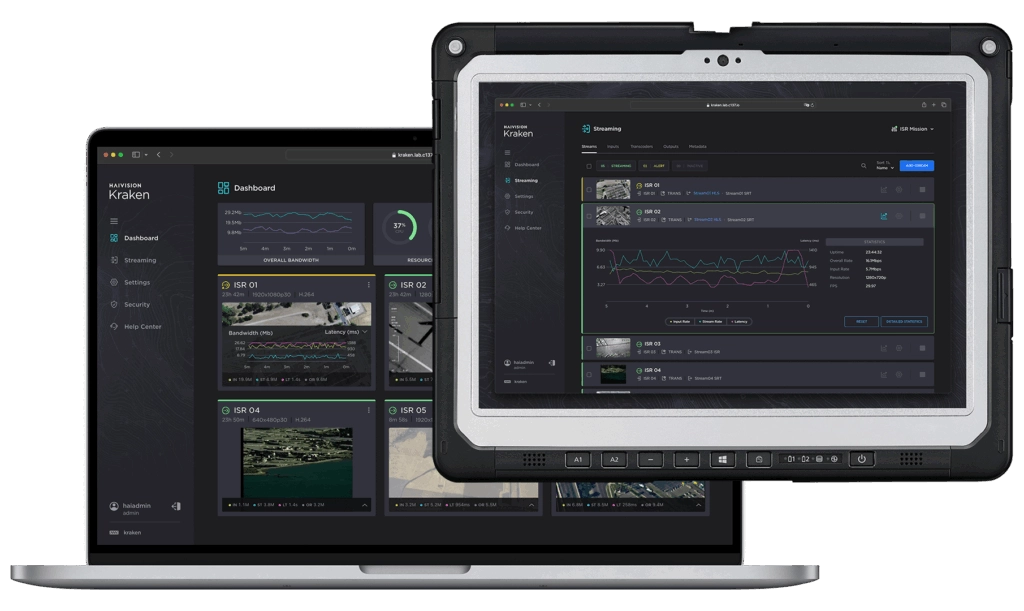
Kraken is a comprehensive video processing platform that combines software flexibility and hardware acceleration to encode, transcode, and transport high quality video and metadata in real-time. Ideal for defense and ISR, Kraken excels in limited bandwidth environments, supporting diverse protocols and codecs. Kraken provides flexible deployment options, making it the ideal solution for all full-motion video processing challenges.






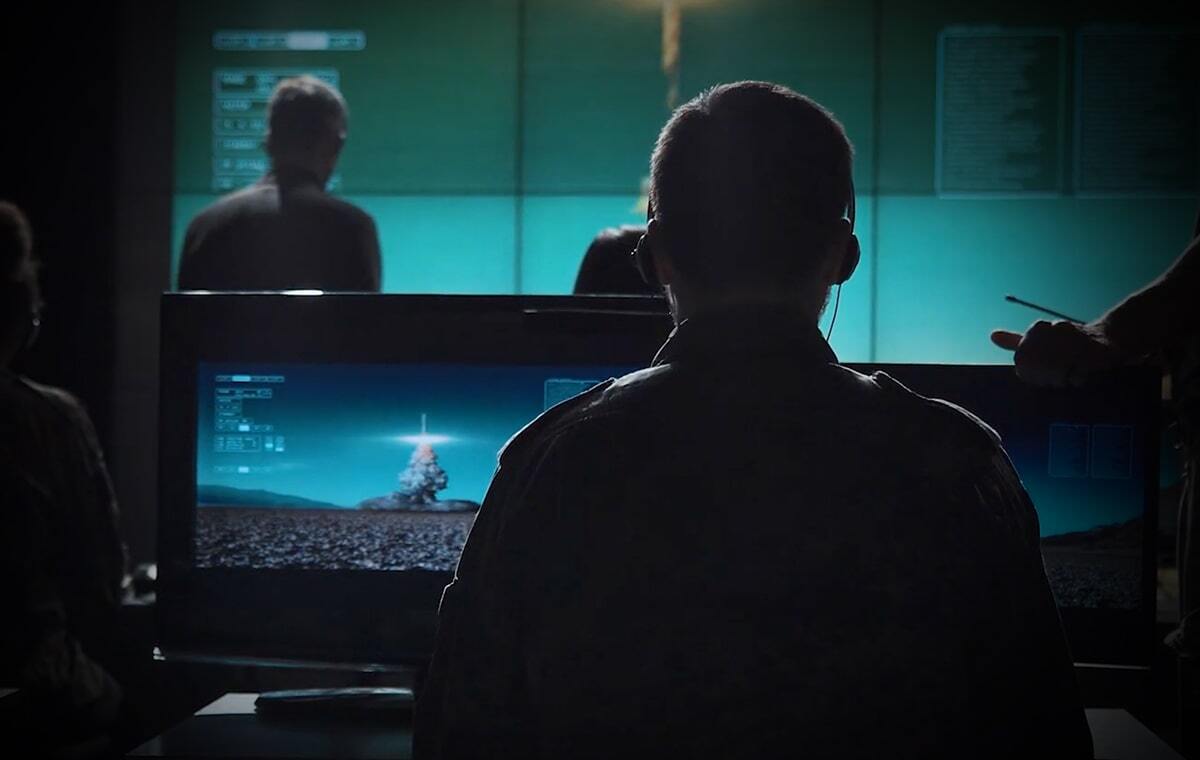
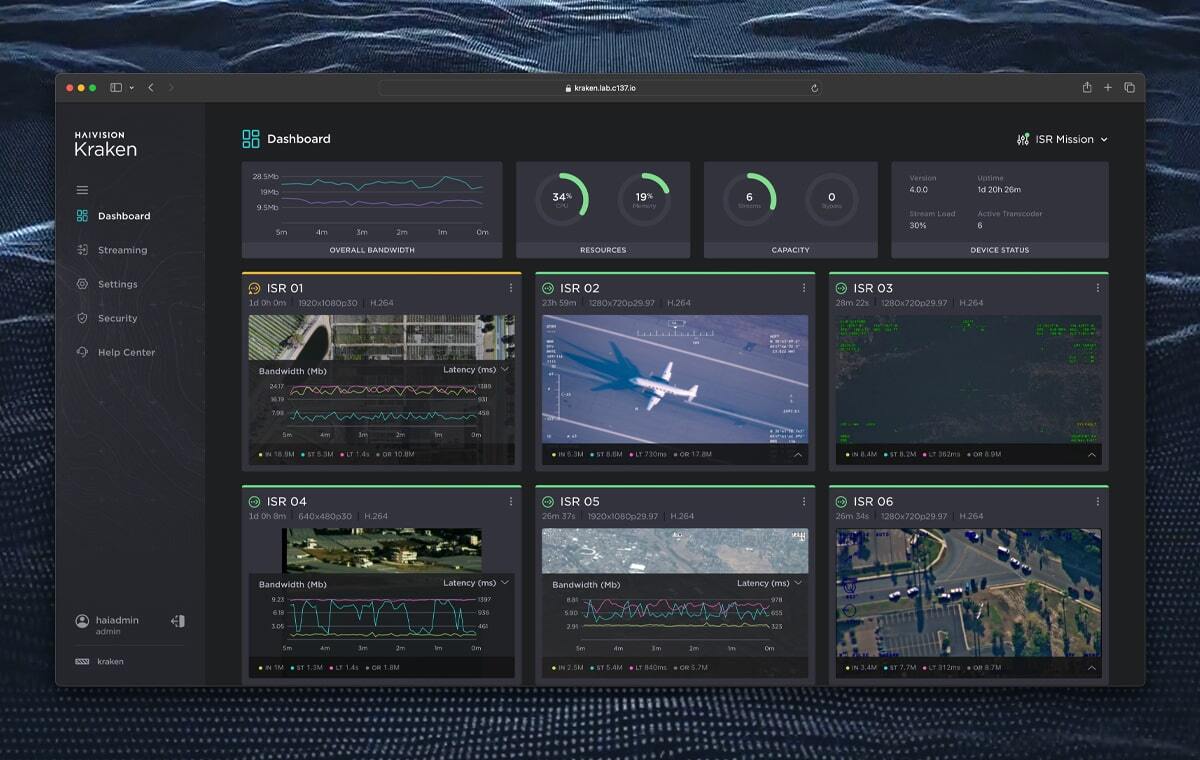
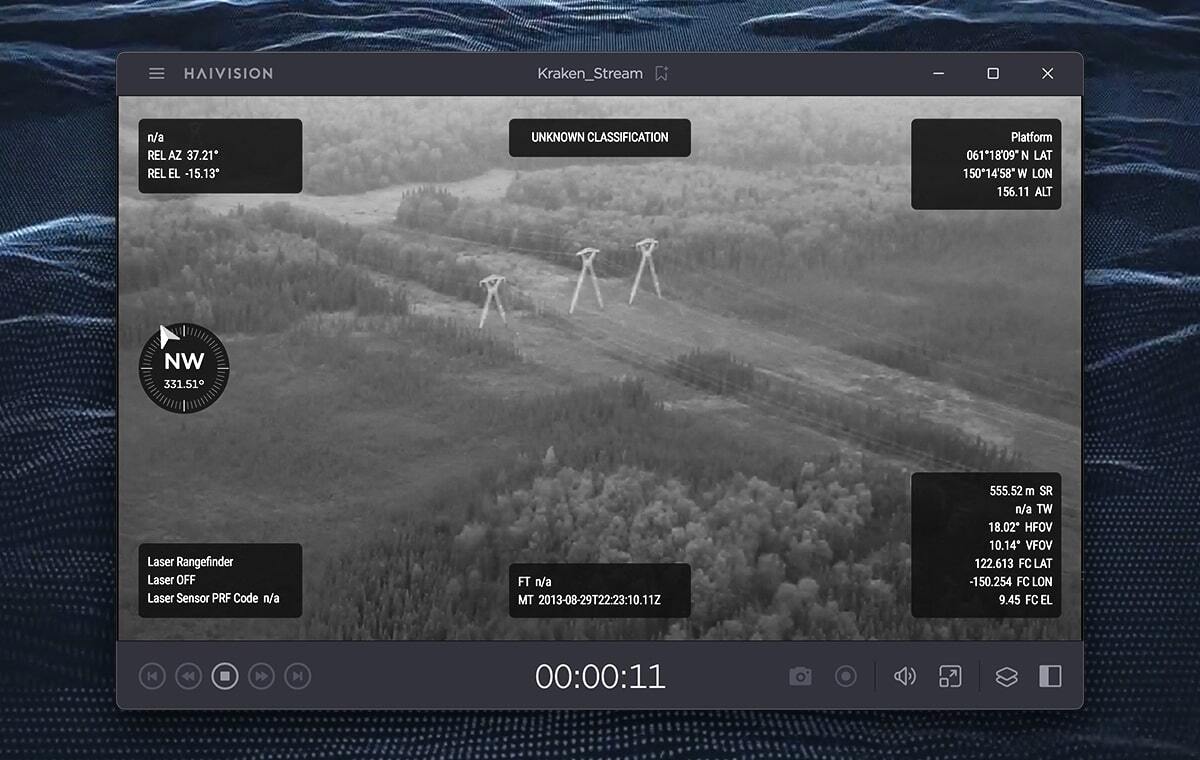
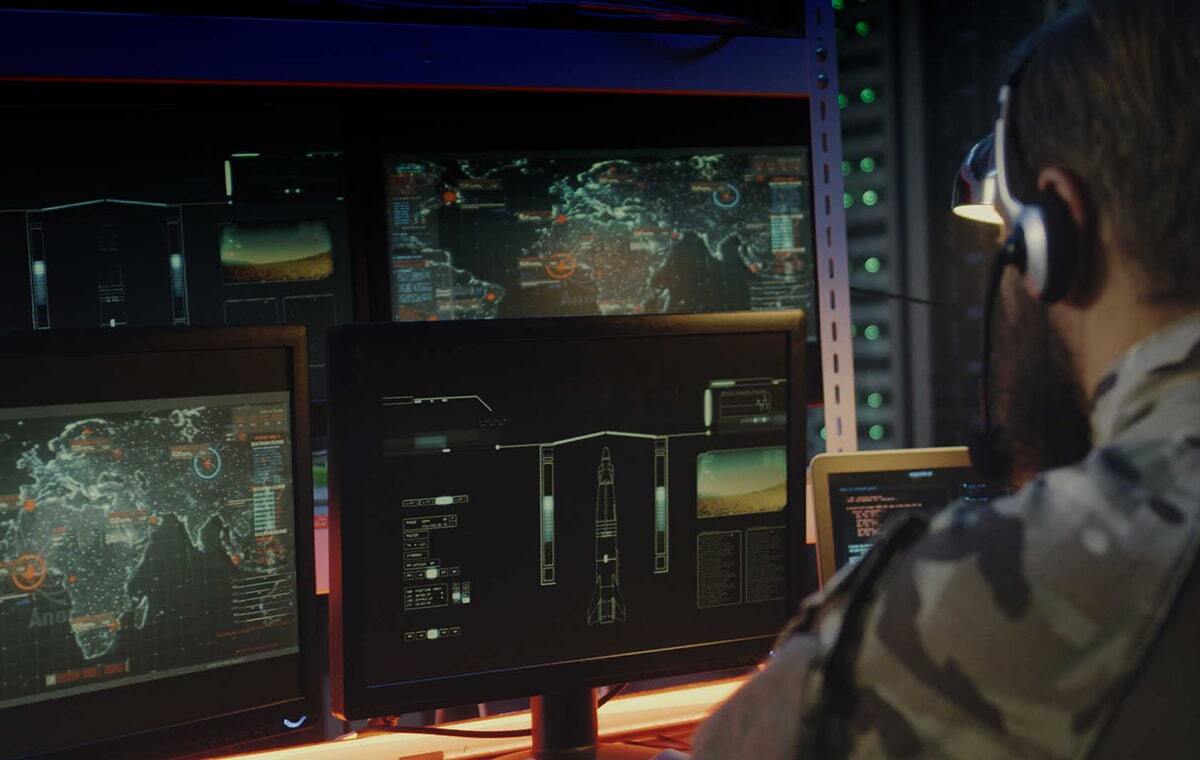
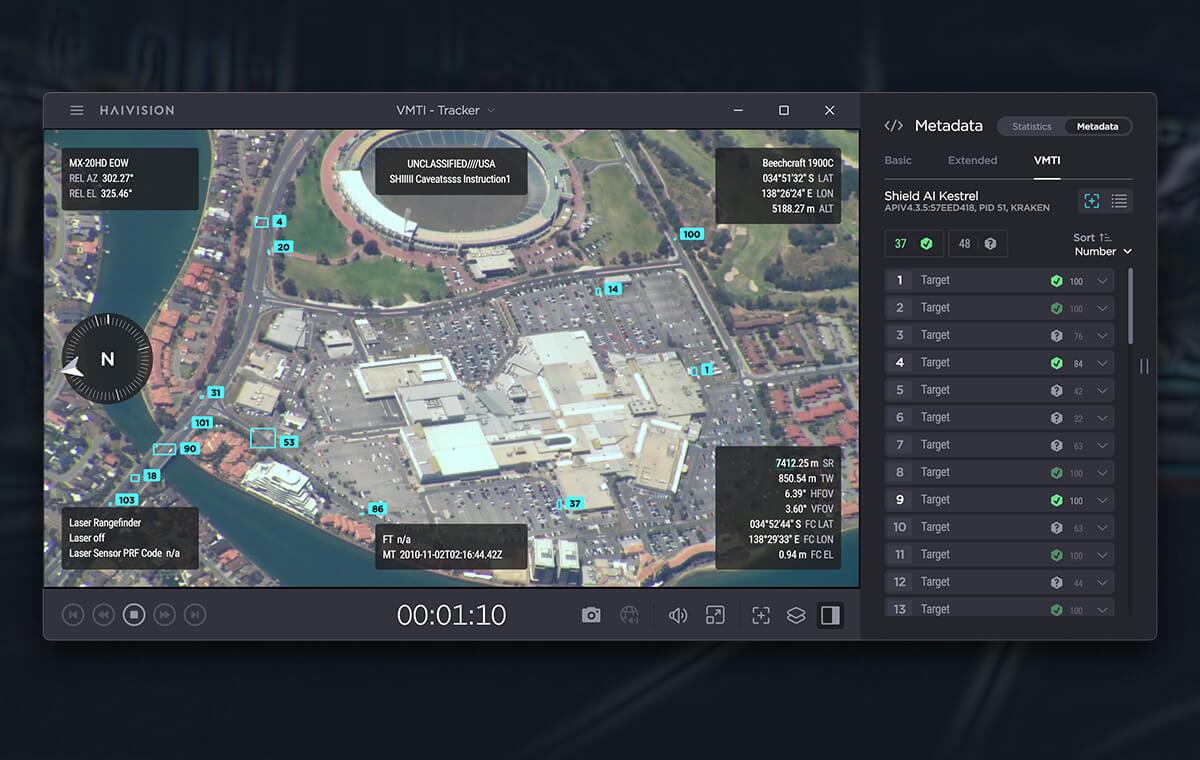
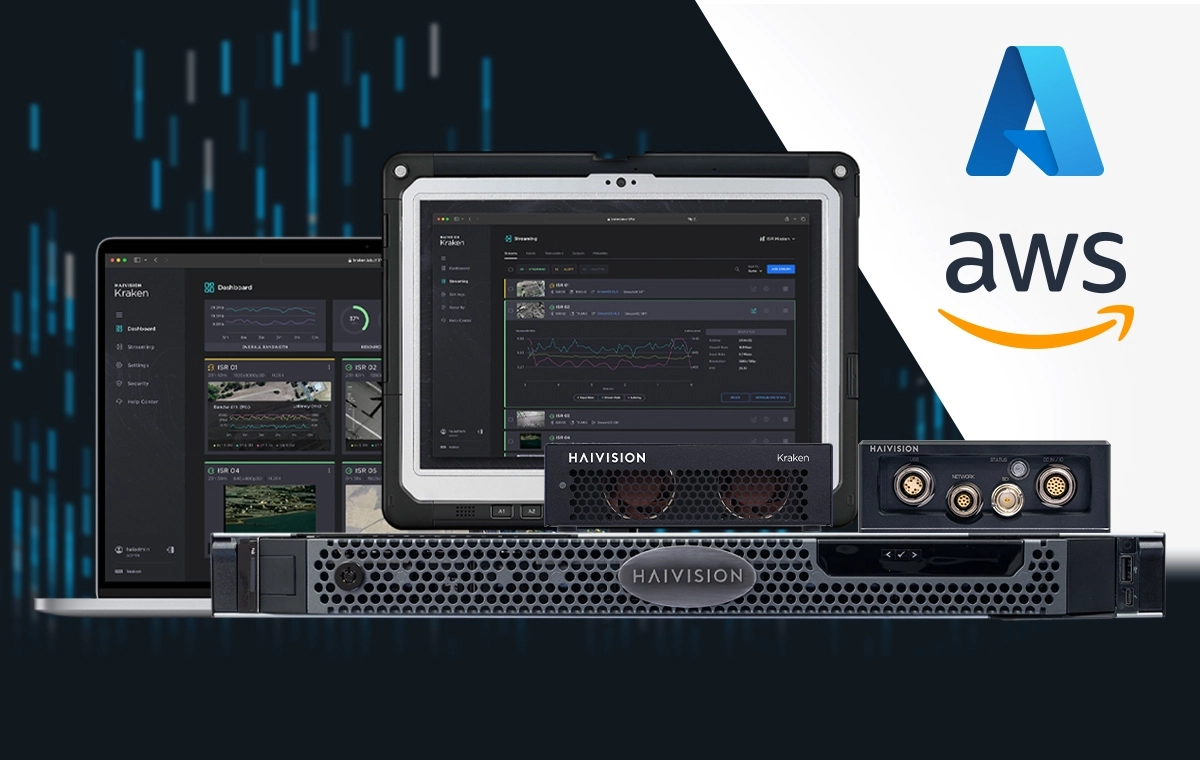
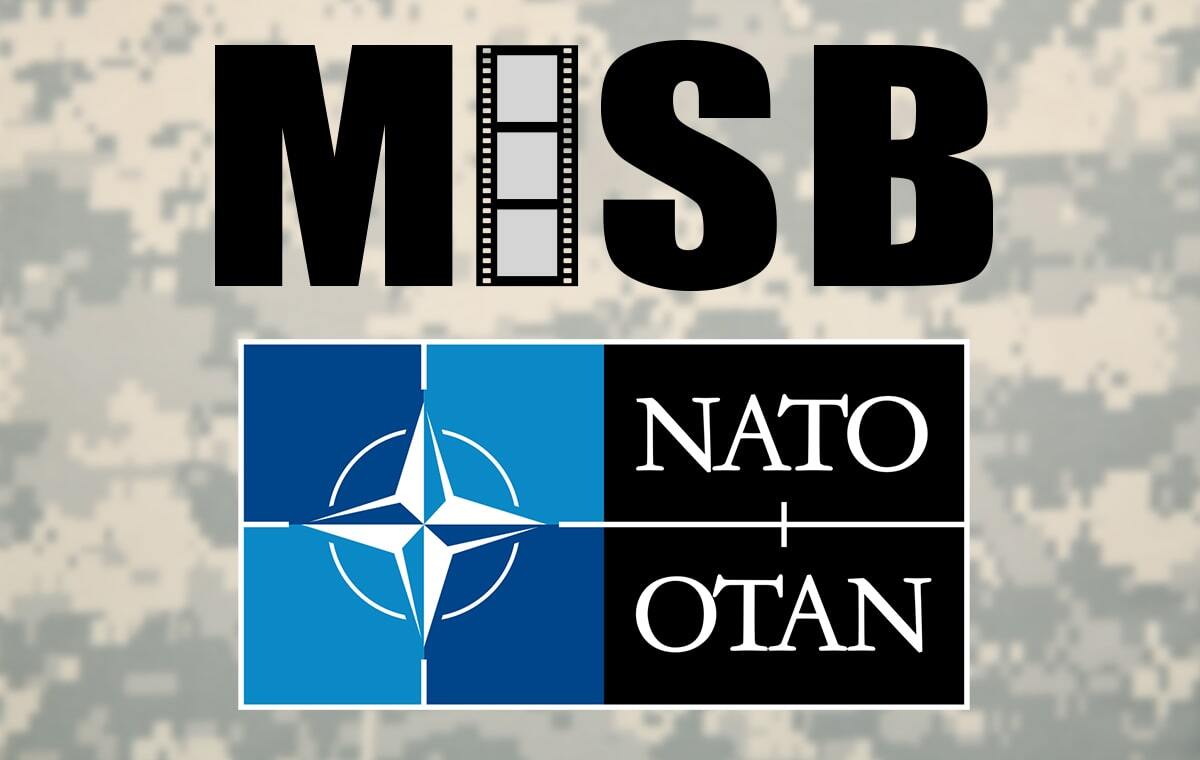
Kraken adheres to MISB and STANAG standards, ensuring compliance and interoperability with defense systems. It supports a range of applications, from ISR backhaul and tactical network distribution to command center operations and critical infrastructure monitoring.
Kraken Virtual Machine (VM) and its powerful low-latency video encoding, transcoding, and routing technology can be integrated into ISR systems, such as tactical communication kits and centralized data centers, all without the need for additional physical hardware.